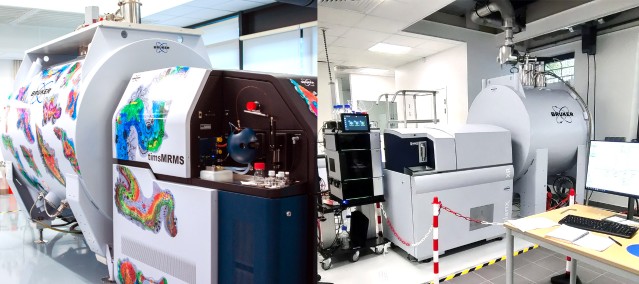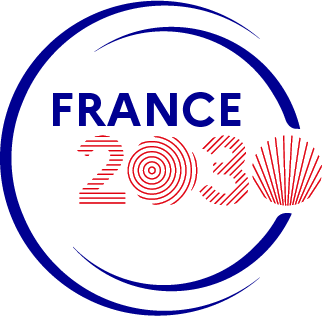
On January 31, 2025, the University of Rouen Normandie inaugurated a 7.5 million euro spectrometer for its Institut de chimie analytique et réactivité moléculaire en Normandie (CARMEN), a joint research unit with the CNRS. This institute is part of the International Complex Matrices Molecular Characterization (iC2MC) laboratory, which also brings together the University of Pau and Pays de l'Adour (UPPA) via a team from the Institute of Analytical Sciences and Physical Chemistry for the Environment and Materials (IPREM, a joint UPPA/CNRS research unit), as well as the National High Magnetic Field Laboratory (“MagLab”) at Florida State University, and the TotalEnergies high-resolution mass spectrometry laboratory in Normandy.
Equipped with a superconducting magnet rated at 18 teslas (T), i.e. around 1800 times the power of the magnetic field created by a decorative magnet, the ion cyclotron resonance and Fourier transform mass spectrometer (FT-ICR-MS) installed at Rouen is the most powerful in Europe. The MagLab in Tallahassee has the world's most powerful * (21 teslas), while UPPA and TotalEnergies have just received their “little brothers”, each with a power of 12 teslas.
These ultra-high-resolution instruments from Bruker, the only manufacturer to master the technology, measure the mass of molecules in the most complex mixtures. For example, they can detect and identify traces of pollutants in water, complex biological samples or battery electrolytes.
The 18T device will give the iC2MC joint laboratory a new impetus for its research into biofuels, batteries and solar panels. It will also strengthen France's capacity to respond to major societal challenges: the spectrometer is already being used to address environmental issues such as the analysis of residues from megafires and their impact on drinking water, or the identification of per- and polyfluoroalkyl compounds (PFAS).
UPPA's 12T FT-ICR-MS will be used in particular for the analysis of complex mixtures, with applications in the detection of emerging pollutants, the analysis of micro- and nanoplastics, and the detection of metallic biomarkers in imaging.
How does the FT-ICR-MS work?
To understand how the FT-ICR-MS at the iC2MC joint laboratory work, and to find out why the magnet is “knitted” by hand, download the illustrated article and comic strip “Journey to the center of the magnet” (PDF 3,3 Mo, in French), soon to be published in Ébullition(s) magazine.

